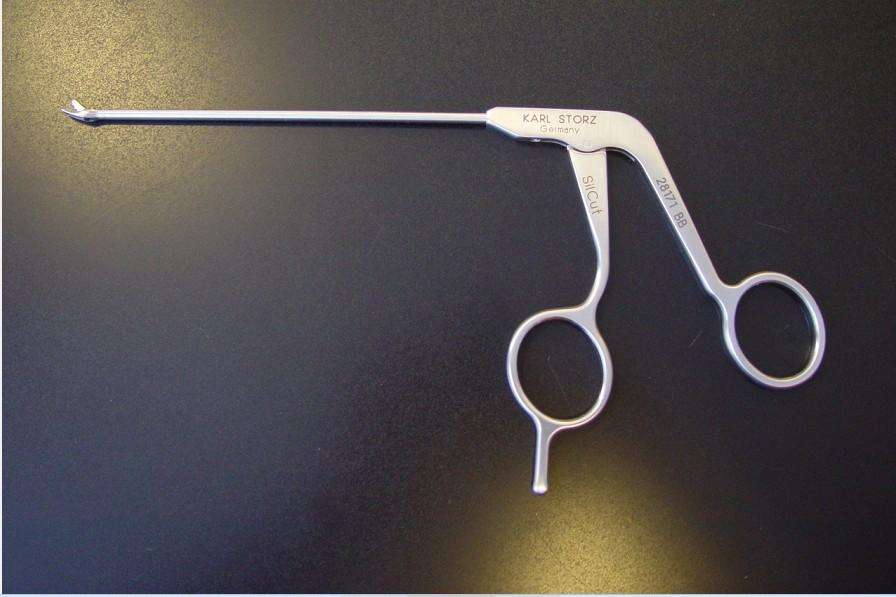
Laser technology is widely used in the manufacturing process of medical devices, including marking, welding, cutting, micro-processing and so on, which is worthy of the name of "Swiss Army knife".This paper introduces the four USES of industrial laser in the manufacture of medical devices and the most suitable and effective laser.
1. Laser marking -- Information identification and traceability of companies, products and parts
Common medical devices, including bone screws, pacemakers, auditory implants and endoscope devices, are marked with lasers.Laser marking provides permanent company and product information, corrosion resistance to ensure long-term traceability. It is a direct component identification method (DPM) and is also approved by the FOOD and Drug Administration.
Several different lasers are suitable for laser marking.These lasers can be divided into ULTRAVIOLET (UV), infrared (IR), far infrared (FIR) and ultrashort pulse (USP) picosecond and femtosecond lasers according to the wavelength, laser medium or pulse duration.The choice of which laser depends on the product material.
For medical devices made of stainless steel, the label must satisfy the following conditions:
Corrosion resistance no surface inclusion biocompatibility to withstand multiple cleaning for stainless steel, USP lasers can meet the above conditions and can pass a rigorous thermal nitric acid test for the best overall results.
2. Laser welding -- an ideal way to connect very small and complex parts
Laser is widely used in spot welding, seam welding and sealing of small precision medical instruments.Be able to weld parts or local positions smaller than 1mm.Microwelds like these are often used in pacemakers, surgical blades, endoscope instruments and batteries.
The lasers suitable for micro welding are pulsed Nd:YAG, CW (CW) fiber, Nanosecond (Ns) fiber, QCW (QCW) fiber and high brightness semiconductor (HBDD) laser.Attention should be paid to choosing the most suitable laser for different applications.
Spot weld available lasers.20-200 micron spot → fiber laser;200-1000 micron spot → pulsed Nd:YAG laser.
Pulsed nanosecond laser (Ns) is the best choice for welding very small metal parts with a thickness of only 0.25 mm and a spot size of less than 50 microns.Pulsed Ns lasers are suitable for welding almost any material, providing new opportunities for small components and new material combinations.
In addition to metal welding, laser is also widely used in plastic parts welding, with clean and pollution-free aesthetic characteristics.

3. Laser cutting -- precision cutting of blades, shafts and sleeves, etc
Laser cutting is ideal for cutting razor blades, precision shafts, supports, sleeves, and hypodermic needles.
Laser cutting is generally divided into two methods:
Gas assisted cutting, usually used with microsecond lasers.Laser ablation is a kind of direct ablation of material surface using nanosecond, picosecond or femtosecond pulse laser, without any post-treatment process, its thermal impact zone is the smallest.Gas assisted cutting is the most commonly used method for laser cutting of medical instrument products. Its speed and precision are sufficient to ensure good cutting quality and slit width.However, as the diameter and characteristics of the tubes become smaller and smaller, laser ablation is more effective.This technology can achieve the characteristic size and notch width cutting of 10 micron scale.
4. Laser micromachining -- Precision surface construction and drilling
Laser micromachining is used in the manufacture of medical devices, such as surface texturing and drilling on needles, catheters, implantable devices and micro-instruments.Ultrashort pulse (USP) lasers are commonly used.Because the short pulse duration allows for more efficient material removal, i.e., less energy output, resulting in a clean cutting effect, with little post-processing required.
Laser micromachining is not particularly fast, but it is an extremely accurate process.In a typical application, femtosecond ultrashort pulse laser is used to process the surface texture of polymer conduits, which can realize accurate texture depth and height control.
USP lasers can also drill very small and precise holes in needles, only 80-200 microns in diameter.In addition, laser micromachining systems can be programmed to process round, square or oval holes to help control drug delivery through needles.Lasers can also produce different types of tiny structures on different materials, including metals, polymers, ceramics and glass.
Another major application of laser micromachining is line stripping.In this application, a femtosecond laser is used to remove the polyurethane coating with a surface thickness of up to 20 microns without causing damage to the underlying material by selective ablation.
● High quality AKJ1530 CO2 laser cutting machine
● ATC CNC Router with a horizontal spindle
● High quality AK30F fiber laser marking machine
● High quality AK20F laser fiber marking machine
● Big news: we're building a new factory
● Polish customer purchased AKM1530 high quality CNC engraving machine
● Heavy duty ATC CNC router with horizontal spindle AKM2030C
● Acctek exhibition footprint
● Cost-effective fiber laser cutting machine AKJ1530F1
● ACCTEK cnc router wishes everyone a Merry Christmas
Get a Free Quote Now!
Useful Link
Recommend Machine
Big discount

Headquarters: 3-1007, Minghu Plaza, No. 777 Minghu West Street,Jinan City / Branch: A2-1-1802, Hanyu Jingu, High-tech Zone, Jinan City
Factory: No. 3 Zone A, Lunzhen Industrial Zone,Yucheng City , Shandong Province
Copyright © Jinan AccTek Machinery Co.,Ltd